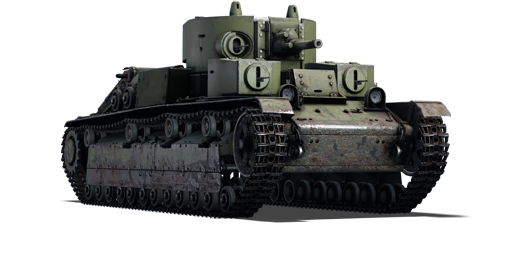The T-28E is an upgraded T-28 with additional armour by adding shields welded on top of the tank's armour, giving it improved protection due to the lessons learned during the Winter War with Finland. The E stands for ekranirovannij which means shielded. Due to adding additional weight due to the extra protection, the T-28 went from 28 tons to 32 tons.
The T-28E was introduced with Update 1.47 "Big Guns". It is similar to the original T-28 in all respects except the additional armour welded onto the front, side, and rear of the tank. The additional armour improves protection, making the T-28E more survivable in both close quarter battles and long-range engagements. However, improved armour also means greater weight, making the T-28E a bit less manoeuvrable than the previous T-28.















